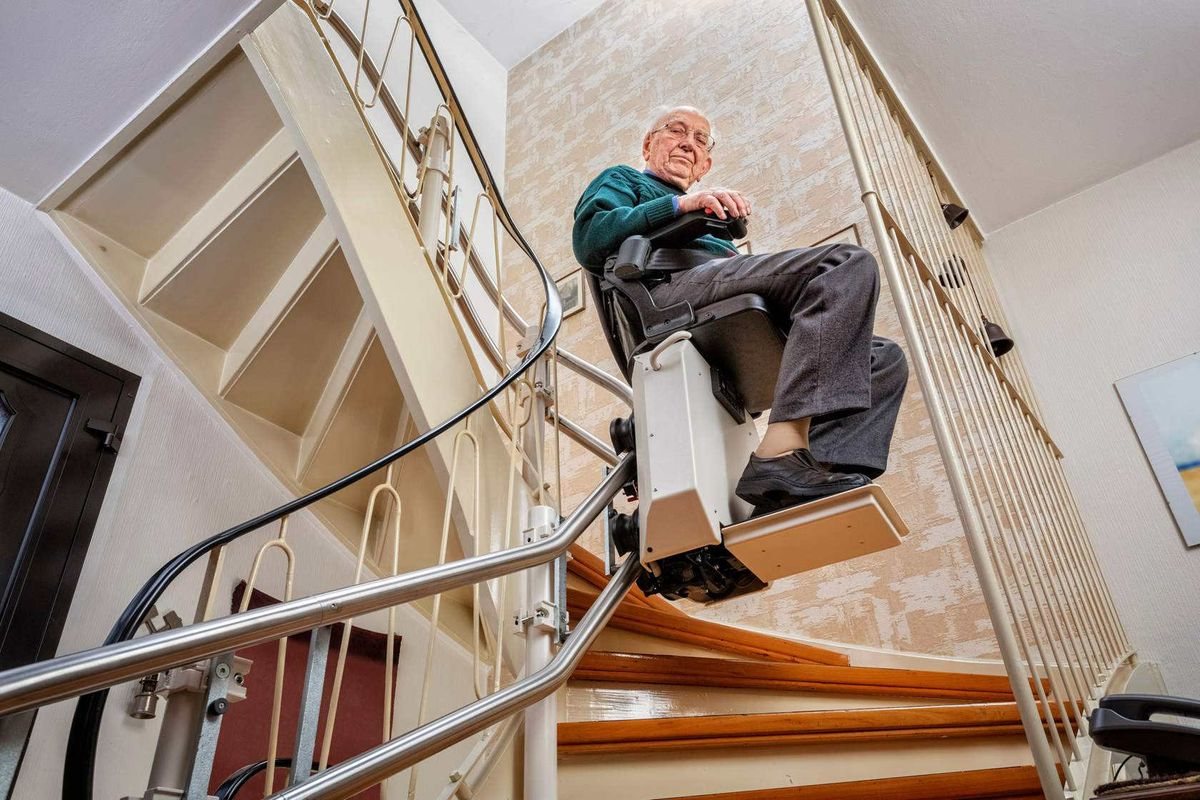Making Your Home Safer for Seniors

We’re all getting older. There are more seniors in the U.S. than ever and many of them are choosing to stay in their longtime homes. That can be a wise decision but it may require some upgrades to make those homes safer.
Considering that a month in a nursing home costs about $8,000, it’s well worth spending a few dollars to make some simple safety improvements that will make it possible for seniors to stay in their homes longer than they might otherwise.
Most accidents in the home happen during the course of ordinary, everyday events – cooking, going up and down stairs and personal care. Nearly all of these activities can be made safer with a few renovations to an existing home.
Simple safety renovations
- Make stairways safer Tack down carpets, install metal handrails on both sides. Consider a stairlift.
- Make the kitchen safer Lower counters and storage bins make life simpler and safer.
- Widen doorways Doorways should be wide enough to accommodate a wheelchair or walker. Make the thresholds level.
- Install LED lights They’re brighter and cheaper. They last longer so they don’t need to be changed as often.
- Have groceries delivered Delivery services are now plentiful and inexpensive. Also consider meal services.
- Move the mailbox The Postal Service will make reasonable accommodations for seniors and people with disabilities.
The bathroom is hazardous territory for seniors and anyone with balance or mobility issues. The Centers for Disease Control and Prevention has found that each year, about 235,000 people over the age of 15 visit emergency rooms because of injuries they suffered in the bathroom. About 14 percent of them are hospitalized.
Not surprisingly, about two-thirds of these injuries occur during bathing or showering. Older people are the most likely victims, with injuries peaking in those over 85. Toilets are close behind in terms of injuries. Accidents getting on or off the toilet are common and, again, tend to occur more often in older people.
Here are a few essential improvements:
- Grab bars They should be within easy reach of toilets, bathtubs and showers. They must be firmly anchored in studs — no adhesives!
- Higher toilets Most toilets are too low. Higher toilets — commonly called “comfort height” or “chair height” — are usually from 15 to 17 inches high.
- Slippery showers Showers are treacherous. They can be made safer with grab bars, non-slip surfaces and, if possible, a lower threshold.
- Walk-in bathtubs It’s much easier to safely get into and out of a walk-in tub. They typically have a 2½ to 7-inch threshold, or step-in height, compared to the 15 inches of most standard tubs.
Do a safety audit
It’s a good idea to do a “safety audit” of your house or apartment. Walk around and watch for things that could trip you up. Here are a few excerpts from a safety checklist produced by the CDC.
- Floors Floors should provide a clear pathway through each room. You shouldn’t have to walk around furniture and there should be no throw rugs that could be a trip hazard. Extension cords are a no-no. Magazines, toys and pets don’t belong on the floor where they could trip someone.
- Stairs Stairways should be clear at all times — no shoes, newspapers or other obstacles. What about lights? There should be a bright light over every stairway, with a switch at both ends, so you never have to walk up or down in the dark. Loose or warped steps should be replaced.
- Kitchen Take a look at your shelves. Are you always reaching for dishes and cookware? If so, they should be moved to a lower shelf. Use a step stool? It should have a waist-high bar you can hold onto. Never stand on a chair. And, as in other rooms, remove throw rugs and remove any extension cords that you could trip on.
- Bedrooms The bedroom should have a light you can reach easily if you have to get up in the middle of the night. There should also be a night light that helps you find your way to the bathroom — and, again, no throw rugs, magazines or laundry on the floor!
Pets can be wonderful companions for older people but they are also a safety risk. Tens of thousands of people trip over their dogs and cats every year, the CDC reports — 87,000 seriously enough to wind up in the emergency room annually.
Lock up the dungeon
The easiest way to make basements safer is to stay out of them! Many safety experts recommend that basement doors be locked by caregivers, with essential items brought onto the main living level.
Seniors should consider replacing a basement washer and dryer with a smaller, apartment-sized combo unit that will fit in the kitchen or just about anywhere else.
Long-term investment in safety
These are the most obvious – and essential – upgrades to make your home safer for seniors and anyone with balance or mobility issues.
Many people are making these improvements early, so they’re available when the time comes. After all, we’re all just one false step, blood clot or stroke away from needing a little help with daily activities.
Many of these improvements can be made by handy homeowners. Even the walk-in bathtub is a relatively simple installation, since the tubs are usually the same size as existing older models.
Most seniors want to stay in their homes as long as possible. These simple upgrades – and a little help from friends and family – can help them do just that.
This story is excerpted from a Consumer Education Center training course intended for professionals in the consumer products field.
